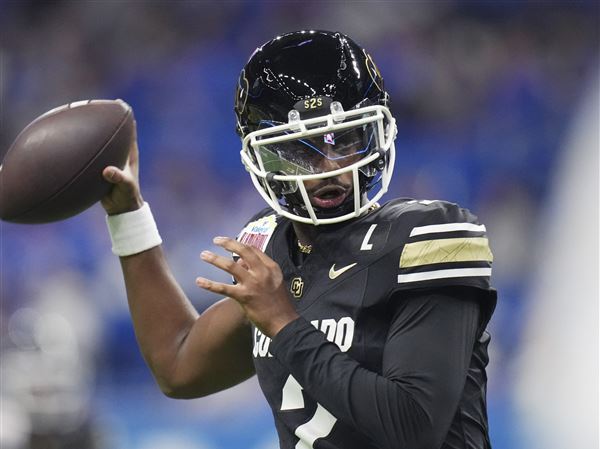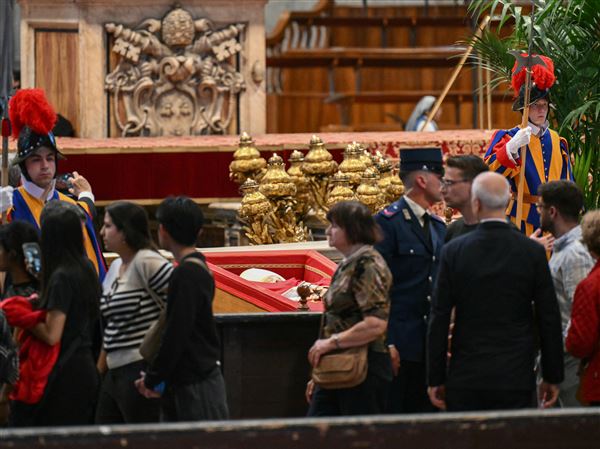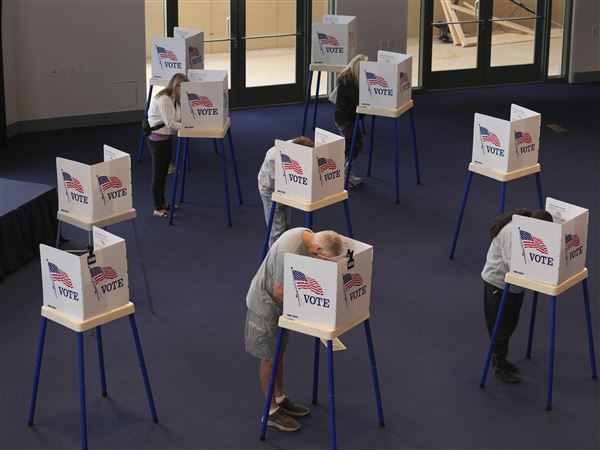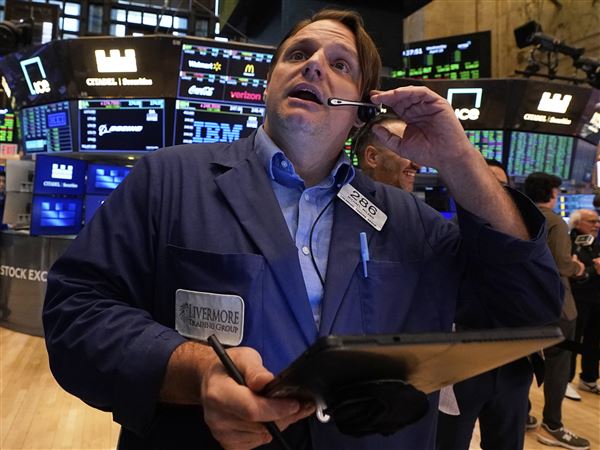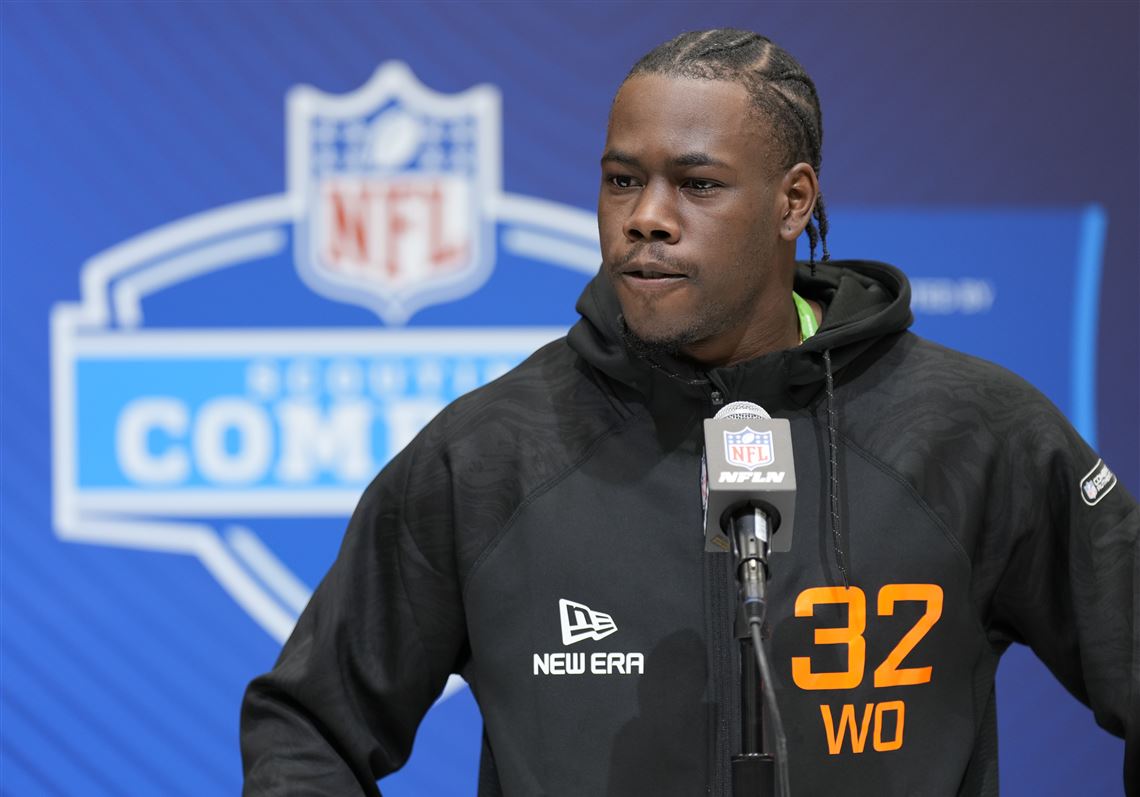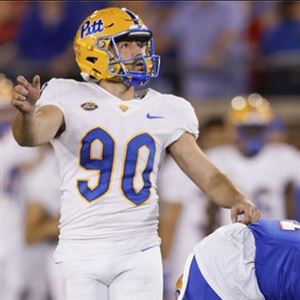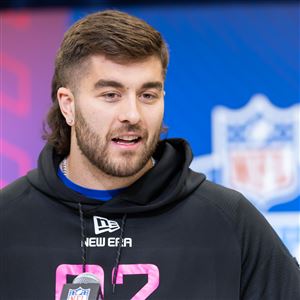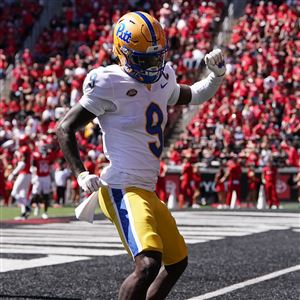Part 2 in a Post-Gazette series chronicling what it takes to prepare for the NFL draft.
INDIANAPOLIS — Konata Mumpfield felt ready for the NFL combine when he arrived Feb. 25. He’d flown into Indianapolis, checked into his hotel and was ready for the whirlwind of a week set by the NFL’s schedule for the more than 300 NFL prospects who participated this year.
When the Post-Gazette last spoke with Mumpfield in early February, he had just finished a strong performance during East-West Shrine Bowl week.
Although Mumpfield led Pitt in receiving yards in 2024, he knew going into the combine that he had a lot to prove to NFL scouts to boost his profile to be a higher pick in the NFL draft. In order for that to happen, Mumpfield had to navigate a gauntlet of tests, interviews, medical examinations, physical training and on-field drills required of all participants — and do so while making the right impression on NFL scouts.
For some, the stamina and perseverance to overcome the NFL’s stringent schedule for prospects is a major challenge. But thanks to Mumpfield’s upbringing as the son of a military man, that was an aspect of the week that didn’t bog him down.
Surviving the long days
Mumpfield woke up well before his 6 a.m. breakfast time on Feb. 26. At breakfast, he met with the other receivers at the combine placed in his group before they started on a long day that wouldn’t allow the shifty receiver out of Hoschton, Ga., to get back to his hotel room until midnight — 18 hours later.
Some of the tasks Mumpfield faced were relevant to his health, like medical examinations, and others were the added pomp and circumstance of the combine, like meeting with employees of EA Sports so his likeness could be added to their NFL video game franchise.
“There was always a list of things we had to do,” Mumpfield said in a phone conversation with the Post-Gazette after the combine. “One day, we had to do this EA thing for ‘Madden’ where they scanned our face and our body. Other times we’re getting our medicals tested — sometimes all day. On Wednesday, my medicals started at 11 a.m. and I didn’t get done with just that part of it until 8:30 p.m.”
During those medical examinations, players would be called to have different tests based off their history of injuries from their college football careers. From X-rays to MRIs and other tests, NFL teams can get players examined for any lingering questions about their health before the players even start their formal and informal meetings.
Those meetings are where players can build the relationships with coaches and scouts that could lead to them being a favorite on an NFL teams’ big board on the weekend of the draft. Mumpfield didn’t have any formal meetings on the week, but he met with every team in an informal manner, with certain teams who stood out more than others.
“I felt like the Steelers’ receivers coach liked me a lot,” Mumpfield said, referencing Zach Azzanni. “I felt like the Steelers liked me a lot. Also felt that way about the Chargers and the Bears. It’s hard to really tell because you hear stories about players who get drafted by teams that never even talked to you throughout the whole process.”
That constant barrage of tasks, interviews and tests didn’t bother Mumpfield. For that, he credits his level-headedness, and his father — Ceeprian Mumpfield — for how he was raised.
“You talk about discipline, he shaped me into the person I am today,” Mumpfield said of his upbringing. “My dad is very calm. A lot of things don’t faze him, and that helps keep me calm at the same time.”
‘Control what you can control’
If you ask Ceeprian, he put a concerted effort to show his children how to handle challenges while keeping their heads. It wasn’t easy, but he used his military background as a foundation for how he handled things.
“I believe in leading by example,” Ceeprian told the Post-Gazette. “If I expect my kid to work through tough times, he has to see me work through tough times. I have that leadership and military mind where I can’t let him see me flustered. Things will get rough, but enjoy the process and keep moving forward. That’s what I try to teach him.”
Ceeprian Mumpfield spent several years in the military service with deployments to Haiti, Iraq, Honduras, Korea and Japan. He received a Bronze Star for his service and finished with the rank of Master Sergeant.
Today, Ceeprian teaches leadership classes to middle school students in Gwinnett County, Ga. The lessons he provided to Konata took time to set in.
“He used to say, ‘What do you mean control what you can control?’” Ceeprian quoted Konata. “But I think he’s begun to understand that process. That’s the biggest growth I’ve seen in him over college. We deal with the cards as they fall. We’re not going to worry about ups and downs. We problem solve. Obstacles are there for you to go around them, not to stop you. That’s what I taught him.”
During Mumpfield’s time with Pitt, he grew to be a captain on the team because of his work ethic. He even convinced head coach Pat Narduzzi for the program to invest in a Monarc machine that would help Pitt’s receivers with an advanced form of a JUGS machine that fires passes at different velocities and angles. It was his way of using whatever resources were available to improve himself.
But that wasn’t the first time Konata asked for equipment to further his development as an athlete. As a high school player, he asked his father.
“This guy asked me for a JUGS machine,” Ceeprian recalled of his son. “He said he wanted to have a JUGS machine in his backyard so he can get his reps in because he’s trying to go the NFL. But in the first second that I looked for one, I said, ‘I can’t afford no JUGS machine!’”
Konata understood, but he didn’t give up on his search for a JUGS machine to work with in high school. He would eventually come across former NFL receiver Tavarres King, who owned a JUGS machine and agreed to help train Konata after school.
King played three years in the NFL from 2014-2017 for the Buccaneers and Giants. He was happy to help Mumpfield grow in his craft and maintains a relationship to this day.
“He would train us with receiver sessions,” Konata recalled of his time with King. “Over time, we got very close. I worked with him with some of my friends like Mason Kinsey — he still plays for the Titans — and then [King] would have us over at his house to get more work in.”
The work paid off, and Konata developed into a star high school recruit who started a year at Akron before he transferred at Pitt. He credits his upbringing and the foundation his parents provided for his ability to stay focused even during the most difficult of challenges during his football career.
Now, Konata and Ceeprian get to see the fruit of that upbringing.
“He said, ‘Boy, you’re really going to the combine,’” Konata quoted his father. “He talked about, ‘This was something you always dreamed about. You were a two-star when you were recruited [in high school.]’ It’s definitely been a long journey.”
Time to show
By the time Mumpfield spoke to the media on Friday, he’d been through much of the process. After he answered questions from reporters unfamiliar with Mumpfield about which NFL players he models his game after and other inquiries, Mumpfield gave insight into his specific goals of the combine events that were to begin Saturday.
“Route-running, change of direction drills, stuff like that,” Mumpfield said of what he was excited to show off at Lucas Oil Stadium the next day. “A lot of scouts were just telling me to get in the 4.5-range [in the 40-yard dash.] That’s my target range.”
Mumpfield’s style of play as one of the sharper route-runners of the draft class means he can sacrifice straight-line speed for shiftiness and a quick ability to change direction. That’s why NFL scouts were more comfortable with his time in the 40-yard dash not being at the top of the class with Texas’ Matthew Golden’s 4.30-time.
On Saturday, Mumpfield ran his 40-yard dash to the tune of 4.59 seconds — just inside the mark given to him by NFL scouts. He was proud of it, as well as his work during receiving drills that showed his strength as a smooth route-runner.
“Everyone told me I was smooth out there running routes,” Mumpfield said. “I ran well and I caught the ball, so I feel like I had a pretty good day.”
But during some on-field drills, Mumpfield sprained his ankle. It prevented him from finishing the combine events he thought he’d perform the best at — like the 20-yard shuttle and the three-cone drill. Both of those events highlight a players’ quickness and ability to change direction, which are Mumpfield’s forte.
Both on Sunday after the combine events and Wednesday later in the week, Mumpfield told the Post-Gazette that his ankle sprain was minor and his recovery was going well.
The next step will be during Pitt’s pro day, where all the former Panthers looking to make it to the NFL can test in front of NFL scouts. For Mumpfield, that’s a chance to put in solid times on the 20-yard shuttle and three-cone drill to complete his athletic resume for interested NFL teams.
But through the ups and downs of the process, Mumpfield remains focused on what he can control — just like his father taught him.
“It’s been amazing,” Mumpfield said of his NFL draft process. “It might get a little tiring at times, but it’s all about having a positive outlook. There’s a lot of people who wish they could be in my shoes right now. And a long time ago, I was one of them.”
First Published: March 6, 2025, 1:58 p.m.
